Paccheri is a traditional Neapolitan pasta that looks like giant macaroni or, as some say, pieces of a cut-up garden hose!
It's typically used in rich, robust sauces or with delicate seafood, and Italians also often stuff these pasta tubes with ricotta or other ingredients and bake them.
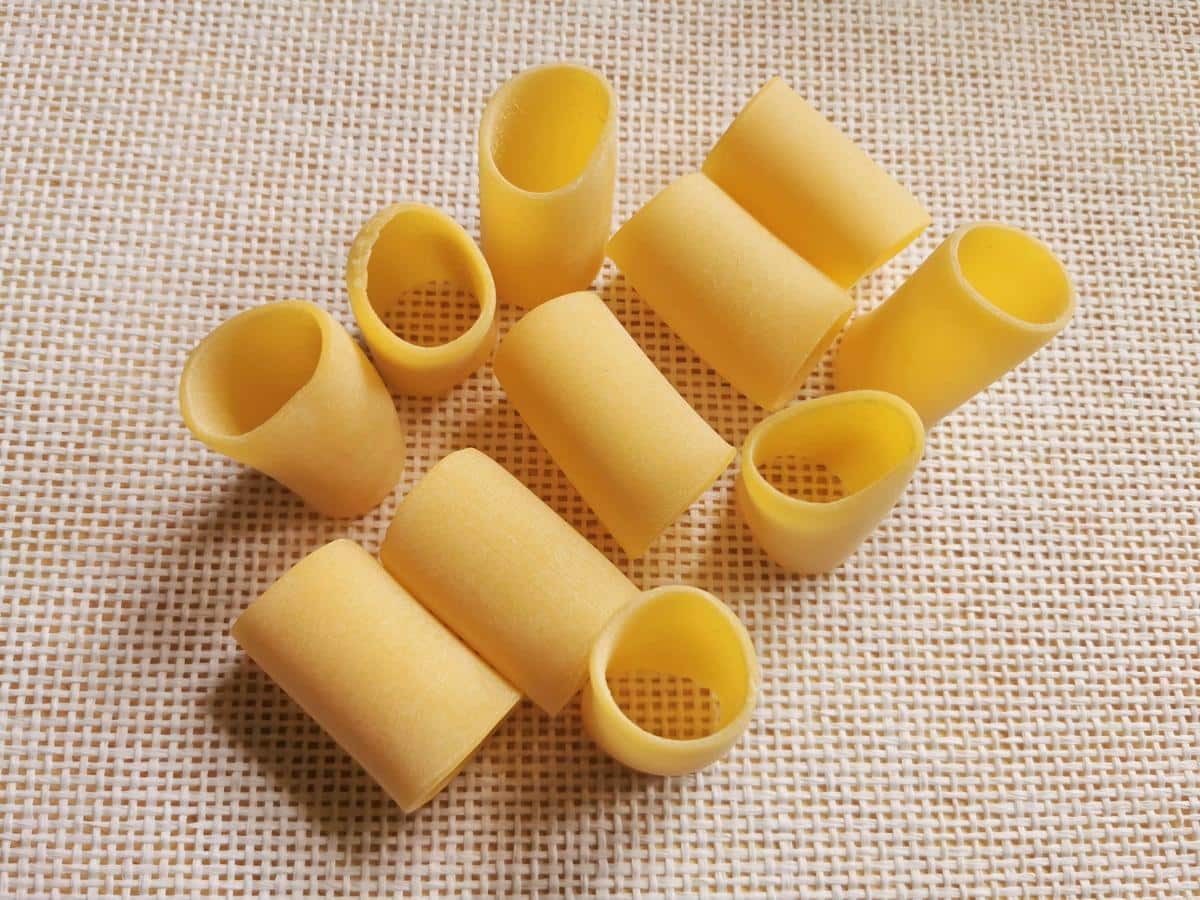
What does 'paccheri' mean?
The word paccheri (also known as schiaffoni) apparently comes from the ancient Greek ("πας" -all and "χειρ" -hand), which translated into Italian means a pat or a slap given with an open hand, but not in an aggressive way.
In Italian, the word for slap is 'schiaffo'. Whereas in Neapolitan dialect, it's 'una pacca'. In fact, this pasta has two names, paccheri and schiaffoni! Many attribute the name/s to the 'slapping' noise made when pouring sauce onto the pasta!
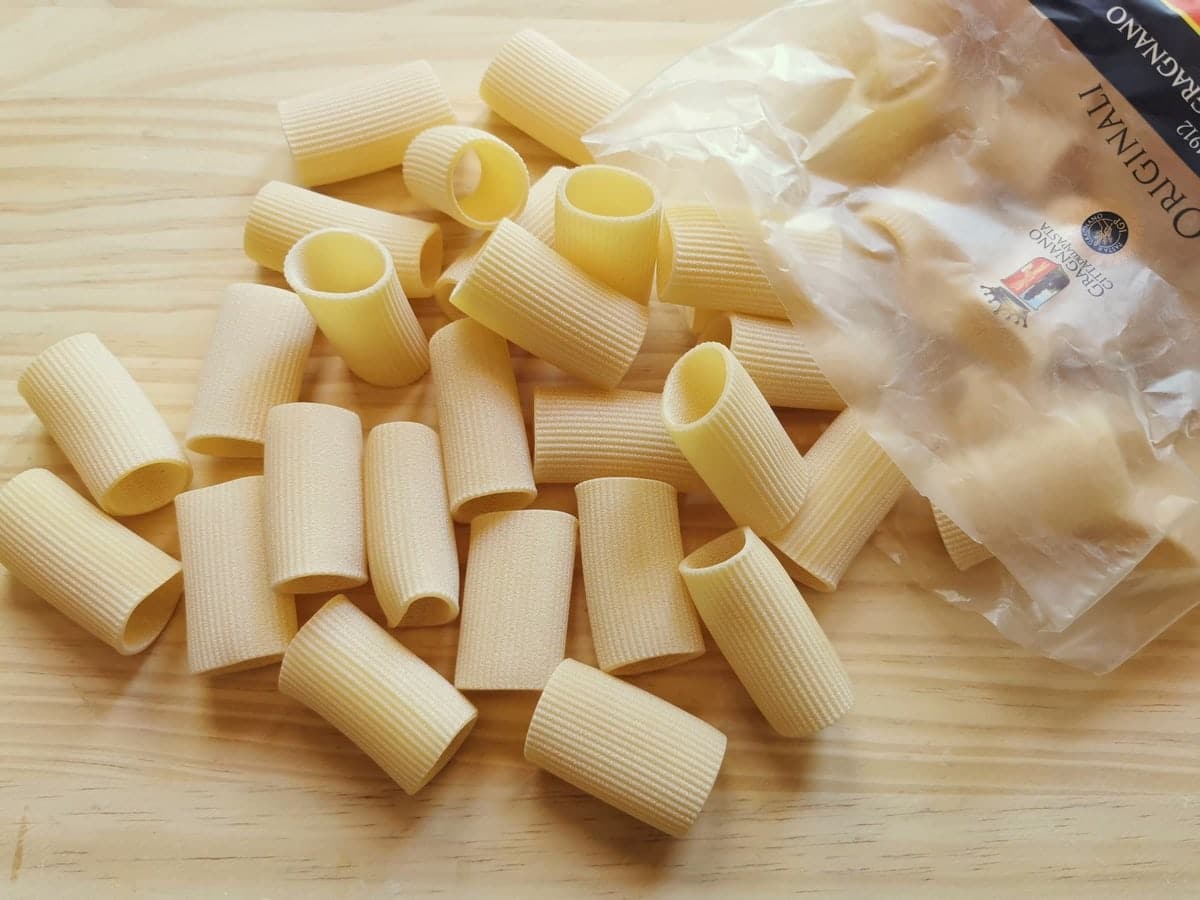
History
In Neapolitan cuisine, paccheri has pretty ancient origins and has been around for a long time. In the past, it was considered 'poor pasta' or pasta for the poor because the pieces are very large and filling.
Consequently, appetites could be satisfied with only a small quantity of pasta. Plus, this was a low-cost food people could make with only flour and water!
The pasta they used for smuggling garlic!
According to food legend, these pasta tubes were invented as a way to smuggle garlic cloves across the alps into what is Austria today. Apparently, Austrian garlic was rather small and not very pungent. In contrast, the Austrians and Hungarian arictocrats loved Southern Italian garlic, with its large pungent cloves.
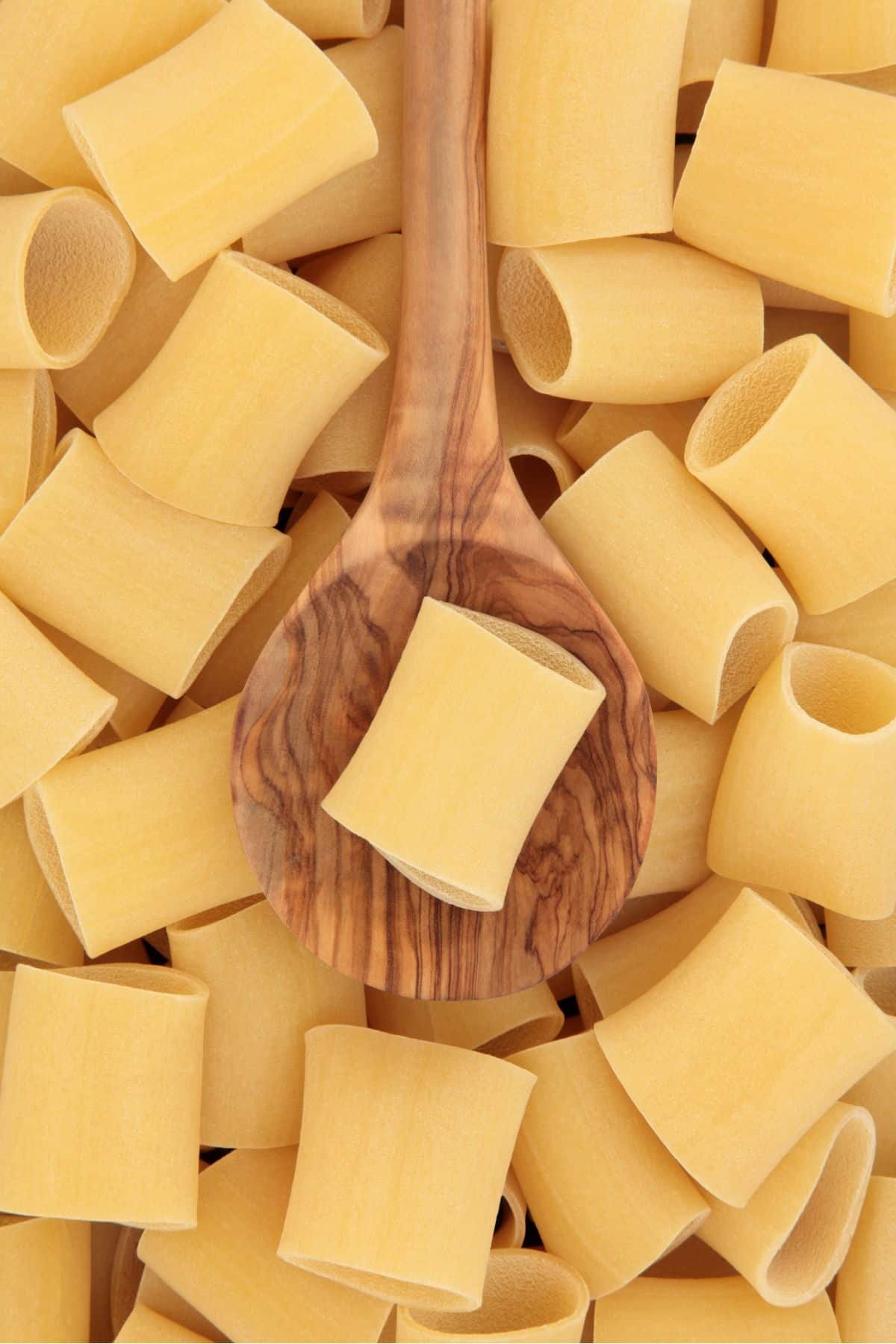
In the early 1600s, the Austrians banned the importation of Italian garlic in order to protect their own garlic farmers. Southern Italian garlic farmers, whose livelihood depended heavily on the Austro-Hungarian garlic market, were more than upset.
The story goes that Southern Italian pasta makers secretly invented paccheri pasta tubes to be perfectly shaped to hide a ducat's worth of Italian garlic (approx.four cloves).
This garlic smuggling operation was so effective that the Austrian garlic industry finally collapsed. The government had not been able to find out how Italian garlic was being smuggled across the Alps so effectively or stop it!
Ingredients
Paccheri is widely availble dried but it can also be homemade. The ingredients used to make the pasta varies depending on the type.
Dried Paccheri Ingredients
- Durum Wheat Semolina: Is the primary ingredient for commercially available dried paccheri, as with most other dried pasta in Italy. This hard wheat flour is known for its high protein content and it enables the pasta to hold its shape when cooked.
- Water: Is used to hydrate the semolina flour and form a workable dough.
Fresh Paccheri Ingredients
- 00 Italian Flour: A fine, high-quality flour used for its ability to produce smooth and tender pasta.
- Eggs: Eggs make the dough kneadable and add moisture to help form a cohesive and elastic pasta dough.
- Olive Oil (Optional): While not necessary, a little olive oil can be included for a softer dough.
Some Italians make homemade paccheri with the same ingredients as the dried commercial version, semolina flour and water. Others use a mix or flours and both eggs and water.
Preparation
The process of making paccheri, whether dried or fresh, involves distinct steps:
Dried Paccheri
Mixing the Dough: The durum wheat semolina with water is combined into a firm, stiff, yet manageable dough.
Extruding the Pasta: The dough is then fed into a pasta extruder fitted with a die designed for this pasta type. As the dough is extruded, it forms into the pasta's large tubular shape.
Cutting and Drying: The extruded tubes are cut to the desired length. Then, they're laid out on drying racks and dried slowly in a controlled environment.
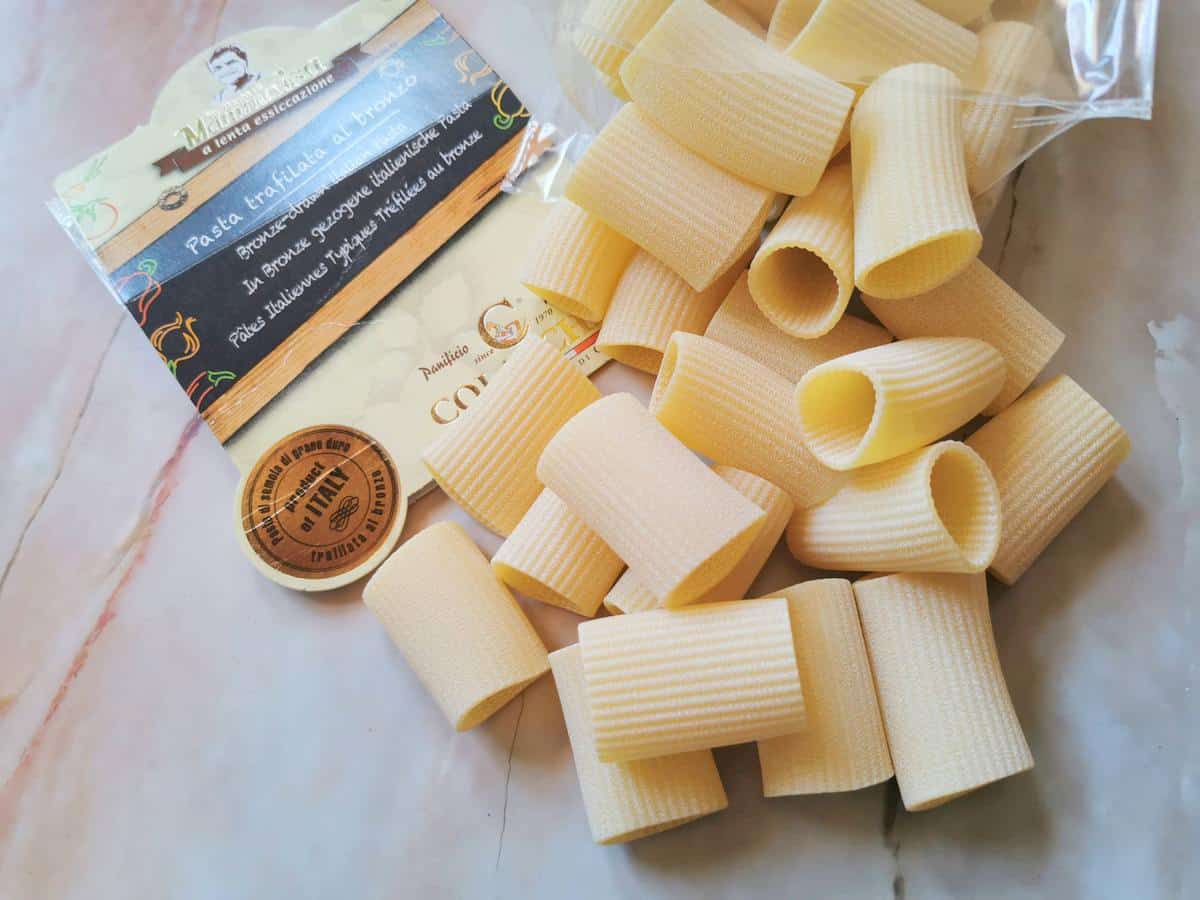
Fresh Paccheri
Fresh paccheri can be made at home without the need of a special pasta extruder:
Mixing the Dough: Make a well in the 00 flour. Add a pinch of salt, beaten eggs, and some olive oil (optional).
Forming the Dough: Gradually mix the wet and dry ingredients, kneading until a smooth dough forms.
Resting the Dough: Cover and let the dough rest, allowing the gluten to relax.
Rolling and Cutting: Roll out the dough into thin sheets and then cut these into rectangular shapes.
Shaping the tubes: Use the rectangles to form tubes around a rolling pin, sealing the edges with water. Stand them up on baking paper-lined trays as you go or thread them onto a narrow wood rod.
Drying: Let the shaped paccheri dry slightly before using and storing.
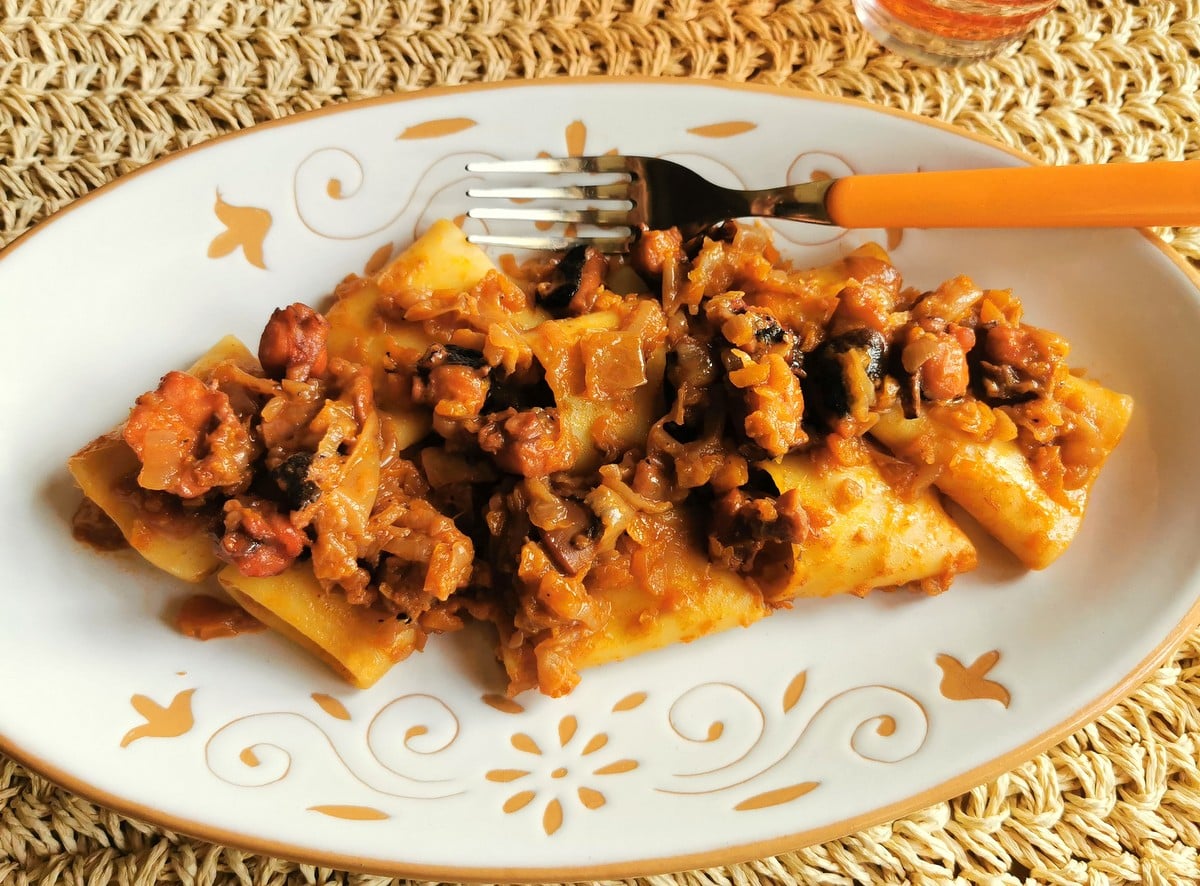
How to Cook Paccheri
Boiling Water: Use a large pot with plenty of salted boiling water to ensure the paccheri cooks evenly without sticking.
Cooking Time: Fresh paccheri usually cooks in 3-5 minutes; for the dried version, it's best to check the package's instructions.
Stirring: Occasionally stir the pasta to prevent it from sticking together.
Frequent Testing: Test the pasta at short intervals just before the start of the recommended cooking time. Al dente should be cooked yet slightly firm to bite.
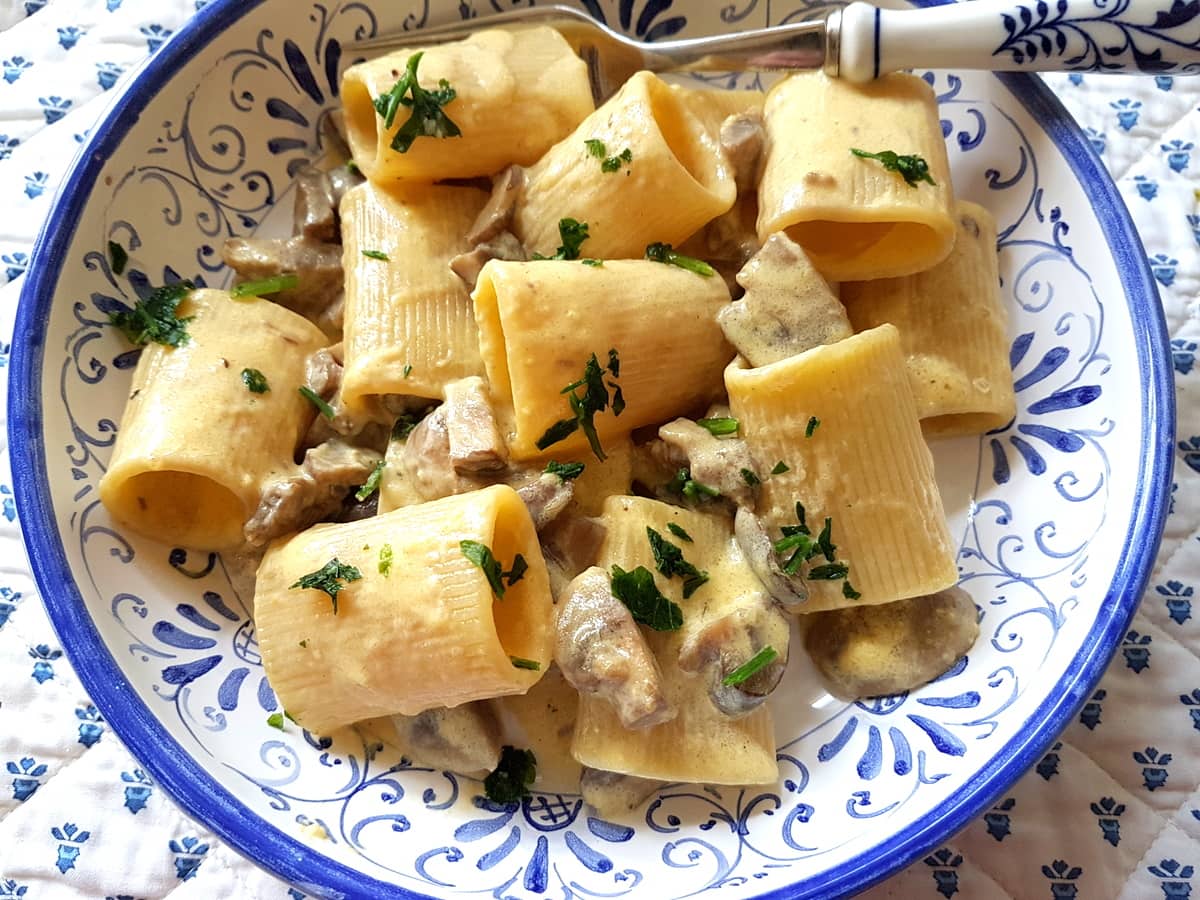
Storage
Dried paccheri should be kept in a cool, dry place, away from heat sources or direct sunlight. An airtight container is ideal for open packages. When stored properly, dried pasta has a very long shelf life. Typically, dried paccheri can last years unopened.
To store fresh paccheri, use an airtight container with enough space to accommodate the pasta without squashing it. It will last for up to 3 days when stored correctly. For longer storage, you can also freeze fresh paccheri.
Recipes with paccheri
Paccheri has a large, hollow shape and is ideal for hearty sauces and seafood. Funnily enough, many dishes with this pasta tend to be very garlicky, maybe because of its garlicky 'history'!
Paccheri also works well in baked pasta dishes like this stuffed paccheri al forno (maccheroni alla pesarese) and ricotta and basil filled paccheri.
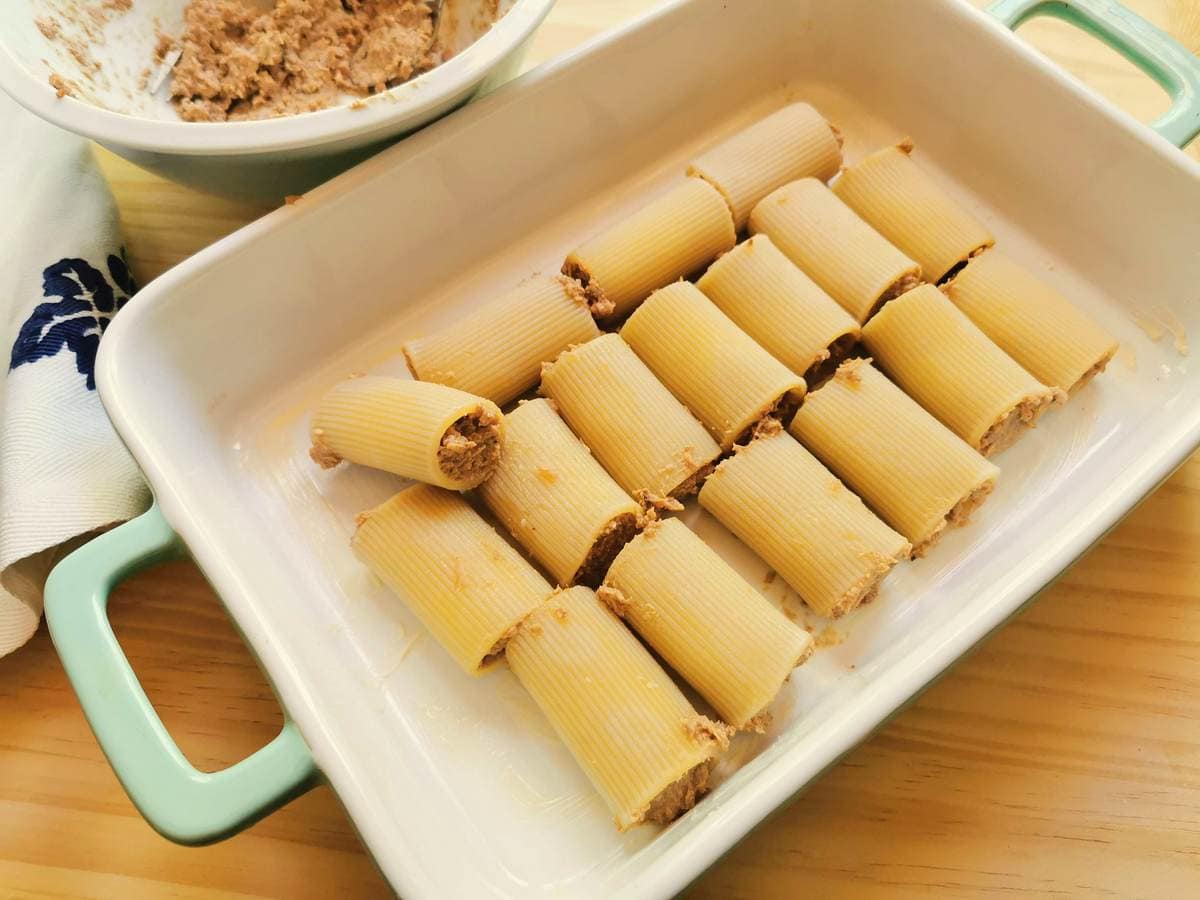
Here are some more recipes to try:
- Paccheri with fresh tuna ragu
- Mezzi Paccheri with Mushrooms and Cream
- Paccheri with Calamari
- Paccheri with porcini, speck and pistachio
- Italian Baked Stuffed Paccheri
- Paccheri with octopus
FAQs
In Italy, there are some different types/sizes of paccheri. Mezzi paccheri, or half paccheri, is half the size of the traditional type. Both rigati 'grooved' and lisci 'smooth' versions are available. Although, smooth is more common. The ridged version is known as paccheri millerighe.
Absolutely. While a pasta machine helps achieve a consistent thickness, you can roll out the dough manually. Ensure the surface is well-floured to prevent sticking and aim for uniform thickness for even cooking.
These pasta tubes are available in many Italian specialty shops or online.

Conclusion
With paccheri, there are endless possibilities as you can find different sizes and smooth or ridged versions. Traditionally, you would serve larger paccheri stuffed and smaller half-sized paccheri (paccheri mezzi) with hearty or seafood sauces. If you want to try out this delicious pasta, have a look at some of my paccheri recipes.
If you found this article interesting do please let me know in a comment below or on The Pasta Project Facebook page.
Thank you!
Pin for Later:
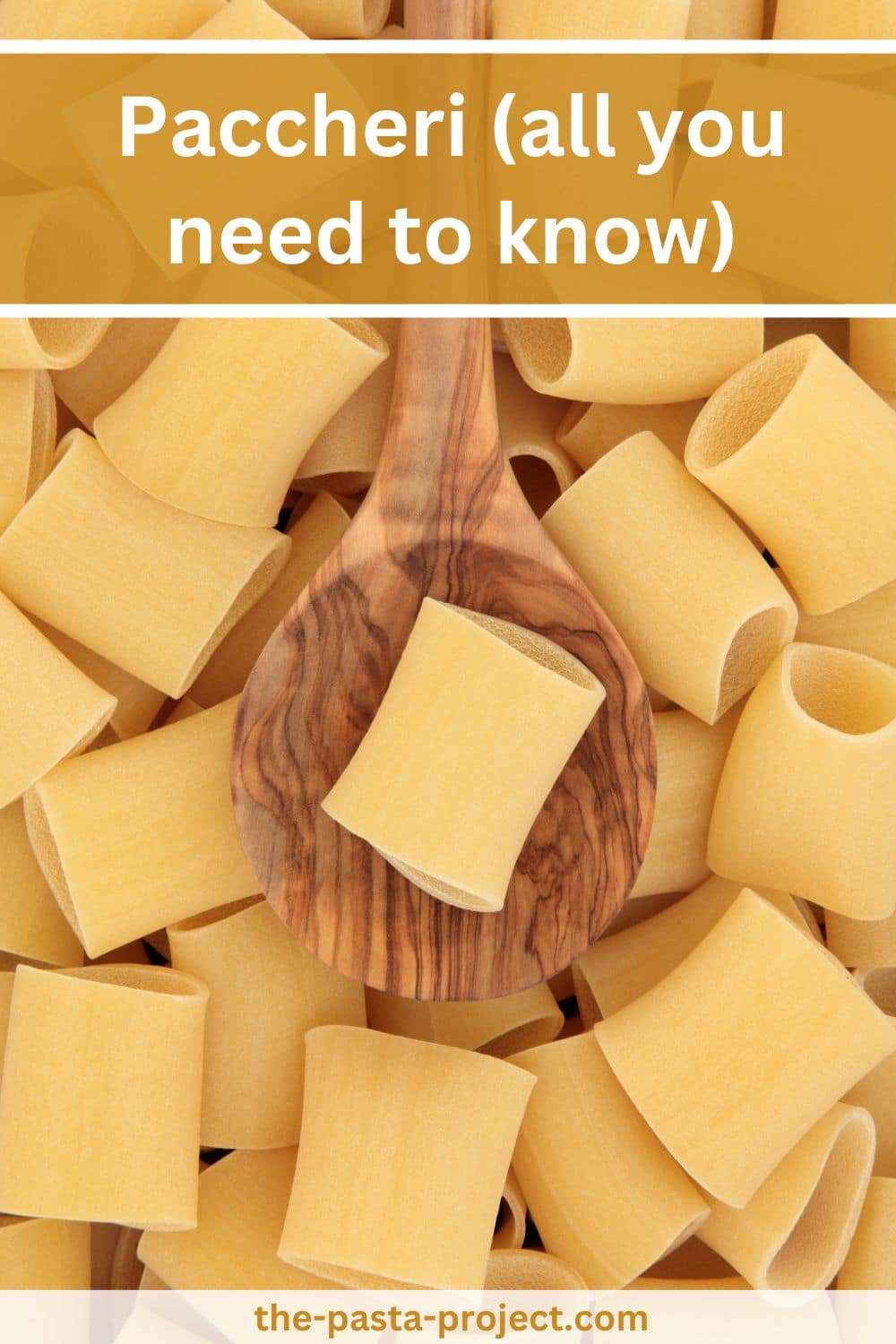
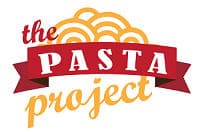

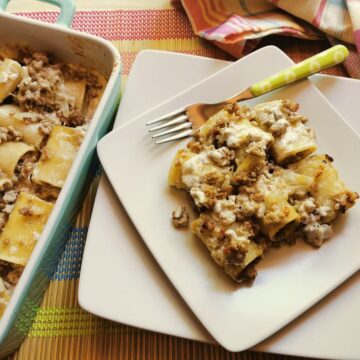
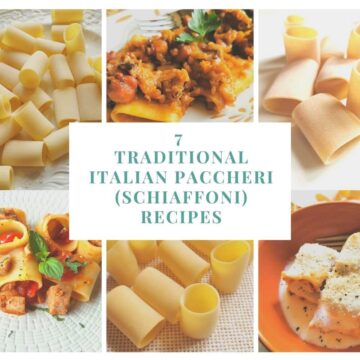
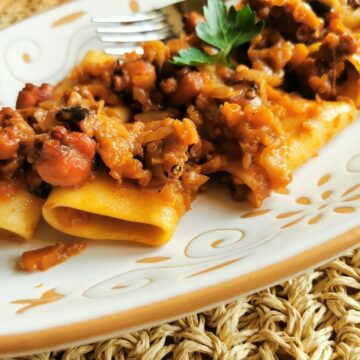
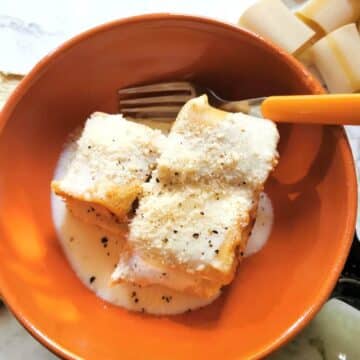
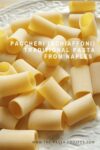
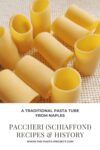
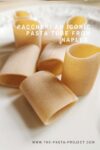
Tim Richards says
Thanks for these delicious recipes. I recently got back from Sicily and in Palermo had an amazing dish called 'Pacchere con crema di pistachio'. It had sprinkled pistachio crumbs on top and a dollop of gooey crema di burrata in the middle. I had the dish again in Catania where it was equally delicious. However in both restaurants the pasta was nothing like the large tubes described in your (and other) online posts. It seemed to be flat squares about 4 cms on each side, like thin 'packets'. They didn't seem to have a filling but were covered in the sauce. Is this a different type of pasta? NB: They were described as 'pacchere' - not 'paccheri'.
Jacqui says
Hi Tim, thanks for your comment. The pasta you mention is most probably unfilled paccheri. I don't know of another pasta with a similar name that might be served with pistachio in Sicily. Paccheri pasta is often cooked unfilled and served with sauce and in this case looks quite flat. Do you remember the name of the restaurants?
Deborah says
Enjoyed learning about this type of pasta, especially how garlic was secretly transported to Austria. So interesting. Thanks for always sharing the history on pasta.
Greg says
Austria isn't Prussia and never has been. Otherwise, this was a nice read, and the pasta is super tasty.
Jacqui says
Hi Greg, thanks for pointing that out. I'm not sure how we came to put Prussia when it should just be Austria! I've corrected the article. I agree paccheri is a great pasta type!
George Spaulding says
Hi Jacqui from Seattle, Washington, USA. I am going to follow your stuffed Paccheri with Ricotta and fresh basil. But I don't understand what passata is. At first I thought it is what we call tomato paste but have never seen it chunky. Could you kindly describe it so I can duplicate. Thanks, George
Jacqui says
Hi George, thanks for your comment. Passata is basically a purée made from peeled, seeded and cooked tomatoes. It doesn't usually have seasoning. Italians traditionally make it at home in summer to use in the winter when tomatoes aren't in season. They use a foodmill (passavedure) to'mash'the cooked tomatoes while removing the skins and seeds in the process. Here in Italy, we can buy ready made smooth passata or chunky (rustic) the latter is somewhere between chopped tomatoes and purée. I prefer it to the very smooth one.
George Spaulding says
Thanks, that clears it up for me. Since tomatos in the US are basically tasteless. I get my peeled tomatoes in a can from Italy. To make sauce(gravy) I puree them to varying degrees depending on the dish. So I can creat pasta.
Thanks so much......George
Michael Gates says
Thanks very much. Really interesting history. I looked this pasta up as my local department store in Helsinki started stocking paccheri recently. My 10 year old suggested a sausage, bacon, garlic and cream/egg sauce. I added some white truffle oil. Probably sacrilege for Italians but I just can't follow recipes and always cook off the top of my head. Anyway, at least we liked it, and I think the thick rich sauce worked pretty well. Interesting that we put lots of garlic in it (before reading your article)!
admin says
Hi Michael, thanks so much for your comment! Some types of pasta and pasta dishes have an interesting history and I love to write about that rather than just post recipes. I think pasta is a great food to prepare the way you feel you want to! It works with so many combinations of flavours. Most the recipes on my blog are traditional but it's great to be creative too! Hope you'll come back and visit again soon! All the best from Verona! Jacqui